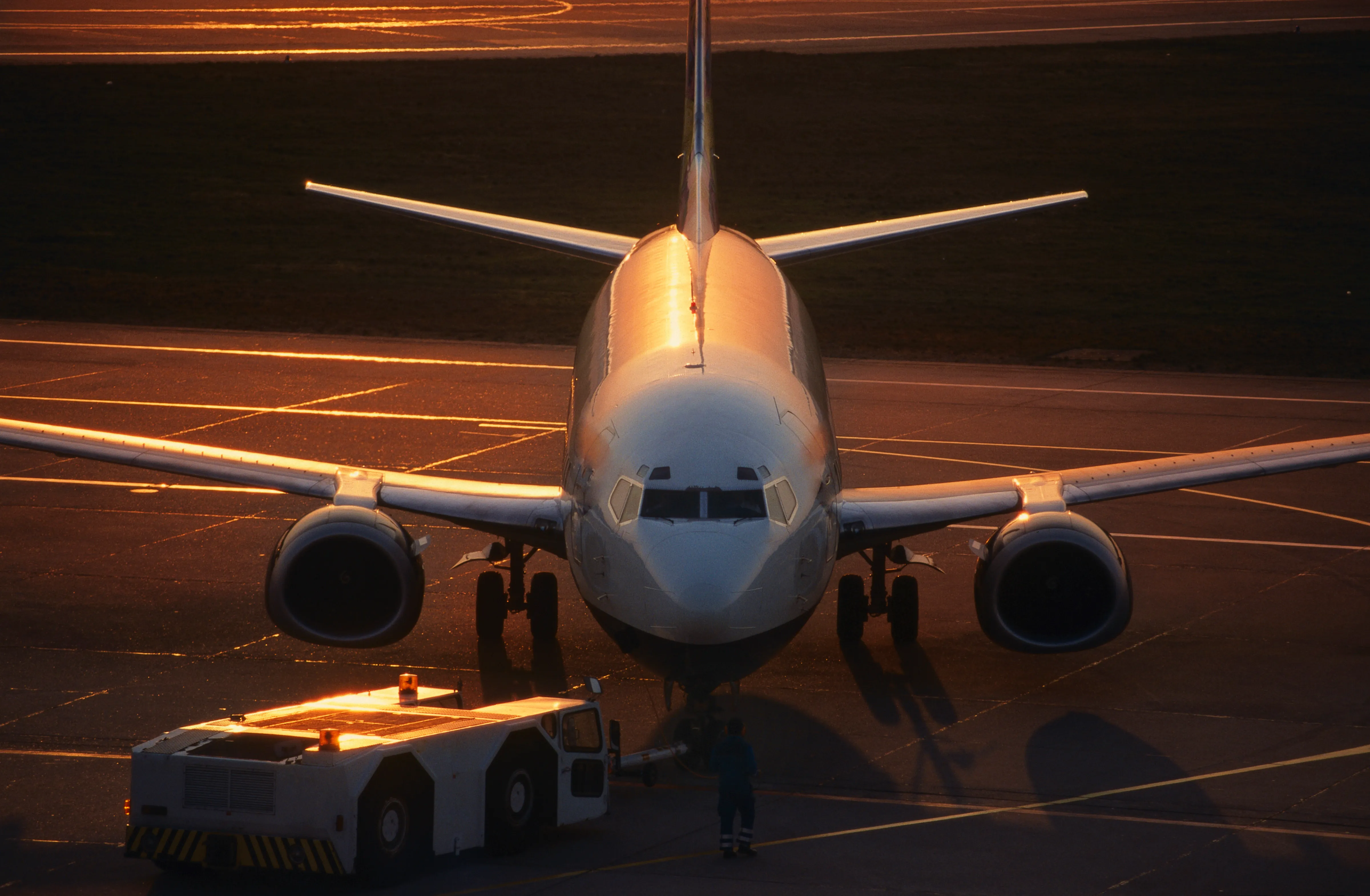The first procedure for an aircraft to begin its journey and depart an airport (of course after pilots’ preparations) is to push back from the terminal building, a procedure that is typically done by a small but strong “tug” truck to reverse it away from the terminal building. But rather than spend more money to push back, since it is possible to push back relying only on the aircraft engines’ feature—the reverse thrust—why don’t airlines use this feature? Let’s figure this out!
What is reverse thrust?

Reverse thrust is thrust projected in the opposite direction to provide an opposing, decelerating force in the plane’s direction of travel. This system can be either hydraulically or electrically operated. Its main function is to decelerate an aircraft after landing, in the event of a rejected takeoff, and to reduce wear and heat built up within the wheel brakes.
Join us on TELEGRAM for the Latest Aviation Updates fresh to your phone.
READ MORE ABOUT REVERSE THRUST: Reverse Thrust in Airplanes and how it Functions
It has been done before to push back using reverse thrust!

Some aircraft were permitted to perform a “power-back” on departure in the 1970s and 1980s. This practice reportedly continued into the twenty-first century, with carriers such as AirTran, American, and Northwest doing so as recently as 2006 in aircraft such as the McDonnell Douglas MD-80 family with tail-mounted engines. While reverse thrust pushbacks predominantly involved these aircraft, this practice was not out of bounds for aircraft with wing-mounted engines. Carriers such as American and Eastern Air Lines are said to have also practiced powerbacks with Boeing 737, Boeing 757, and Lockheed L-1011 aircraft.
Reasons not to power-back
Reverse thrust at the gate is not recommended for pushing back for a number of reasons. As a result, doing so is currently prohibited for many aircraft. Although this is technically possible for aircraft, there are a lot of potential problems with this practice.
One explanation is that the air blast that surrounds the aircraft may stir up debris that could damage it. Anyone standing close to the plane, other ground vehicles, and aircraft could all be impacted by this. Before the engines are started, the ground crew would need to clear the area, and this might not be any faster than using a tug.

Additionally, there is the issue of objects actually being “sucked” into the engine. The engine produces a vortex as it spins more powerfully. This might drag tools and other things into the expensive engines.
Besides that, the power-back operation is very loud and consumes a lot of fuel. Today, airport operations’ relationship to noise pollution is a subject of growing controversy. Therefore, it makes sense that stakeholders would want to refrain from this behavior. Finally, unlike cars, aircraft do not have rearview mirrors, so pilots cannot see behind them. As a result, they’d need a spotter on the ground in any case. This would defeat the purpose of performing a movement without assistance.
To sum it up, using reverse thrust that close to the terminal building is too risky for the airport, the ground crew, and the aircraft. A few minutes and money could be saved, but there is also the possibility of millions of dollars in damage and an aircraft grounded. As a result, airports will continue to push aircraft back for the time being with the help of their fleet of small but mighty tugs.
You might be also interested in reading: How Do Planes Stop on Landing?
Youssef Yahya is the CEO and Founder of Aviation for Aviators. He also serves as the Chief-in-Editor of the platform’s website, where he shares his passion for aviation and provides valuable resources for aviation enthusiasts and professionals alike. His love for aviation and entrepreneurial spirit drive him to create innovative solutions, making Aviation for Aviators a unique resource in the aviation sector.
You might also like:
- United Places Largest Aircraft Order in a Decade
- Fire at Newark Liberty International Airport Causes Delays
- New plans form Malaysia Aviation Group (MAG)
- BREAKING: Saurya Airlines CRJ200ER with 19 Onboard Crashes in Kathmandu
- All Luxuries of Air Travel in One Airport (HIA)
Discover more from Aviation for Aviators
Subscribe to get the latest posts sent to your email.

